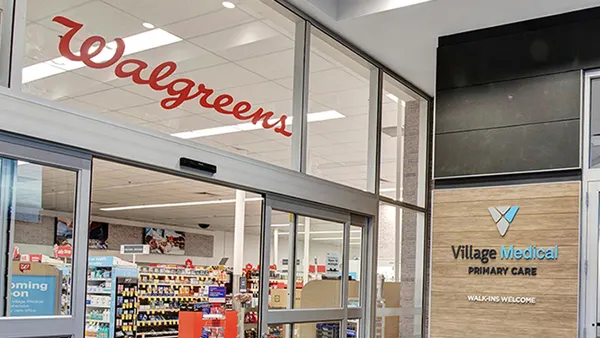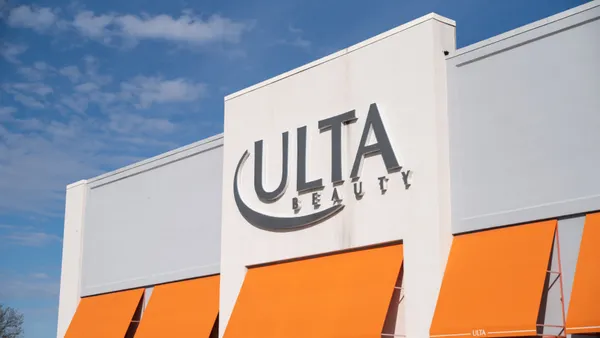Dive Brief:
- Over the last three years, retail has commanded one of the highest default rates among U.S. industries. While big names like Sears and Bon-Ton filed for bankruptcy last year, the spec-grade retail default forecast has fallen sharply from its peak of 19% in 2017 to 4.3% for a year from now, according to a new report published Thursday by Moody's Investors Service and emailed to Retail Dive.
- Moody's highlighted that four companies make up 71% of the $22.8 billion in outstanding distressed (Caa1 and lower) retail debt: Academy, Neiman Marcus, J. Crew and Petsmart. Three companies represent 59% of rated debt for B3 retail and apparel issuers: J.C. Penney, Rite Aid and Petco Animal Supplies.
- Looking ahead, the bifurcation between strong and weak retailers will continue to grow, Moody's said, adding that it expects smaller, more leveraged companies to feed defaults. Immediate debt maturities have become more manageable ($5 billion versus more than $15 billion a year ago), but they will increase to a cumulative $12 billion through 2021.
Dive Insight:
The retail industry has been shedding its weakest links for a some time now, and that's a good thing in some ways. Bankruptcies have reduced the pool of Moody's Caa1 and lower-rated retail and apparel issuers from 26 in December 2017 to 17 currently. But refinancing also comes with great risks. Just take Toys R Us for example, which ultimately liquidated last year.
"The Toys lesson here is that as an issuer’s credit profile weakens, its lender group will likely change, devolving from a group of lenders with a common goal to one that can include distressed lenders who have purchased the debt at a discount, or the 'loan-to-own' lender, who ultimately hope to seize control of the ownership of the company," Moody's analysts wrote in the report, adding that Toys stands as a reminder of vendor risks.
Distressed retailers share a lot of commonalities. Retailers including Guitar Center, PetSmart, David's Bridal, Neiman Marcus, J. Crew and Pier 1 all suffer from operational and execution issues. That's related to turnover, inventory issues, fashion misses and inefficient use of store space, among other things.
Neiman Marcus is an outlier, though, in that it also has an unsustainable capital structure and a high risk of distressed exchange. According to another metric — CreditRiskMonitor's FRISK score — the luxury department store retailer is "financially distressed with an elevated chance of bankruptcy." It has held a score of 1 — the worst possible FRISK score — since December 2017. That should keep suppliers "on high alert," according to a recent report considering the industry average is between a 7 and a 6. "The company has been unable to demonstrate meaningful improvement in operating performance since we published our High Risk Report 13 months ago," according to the report.
Neiman Marcus is reportedly reigniting talks with debtholders to refinance debt maturities that will come due in 2020, but Debtwire analysts have told Retail Dive that the company is in no immediate financial danger.
In its report, Moody's also noted the increasing number of retailers, including Charlotte Russe, Payless and Gymboree, that have defaulted for a second time.
"Regardless of what form the default or re-default takes, the question is why an issuer defaulted a second time," the report concludes. "After all, companies that file for bankruptcy are ostensibly able to use the protections offered by the Bankruptcy Code to slash high debt balances and associated interest expense burdens, renegotiate lease terms, reduce headcount, and close a number of underperforming stores all at once."













